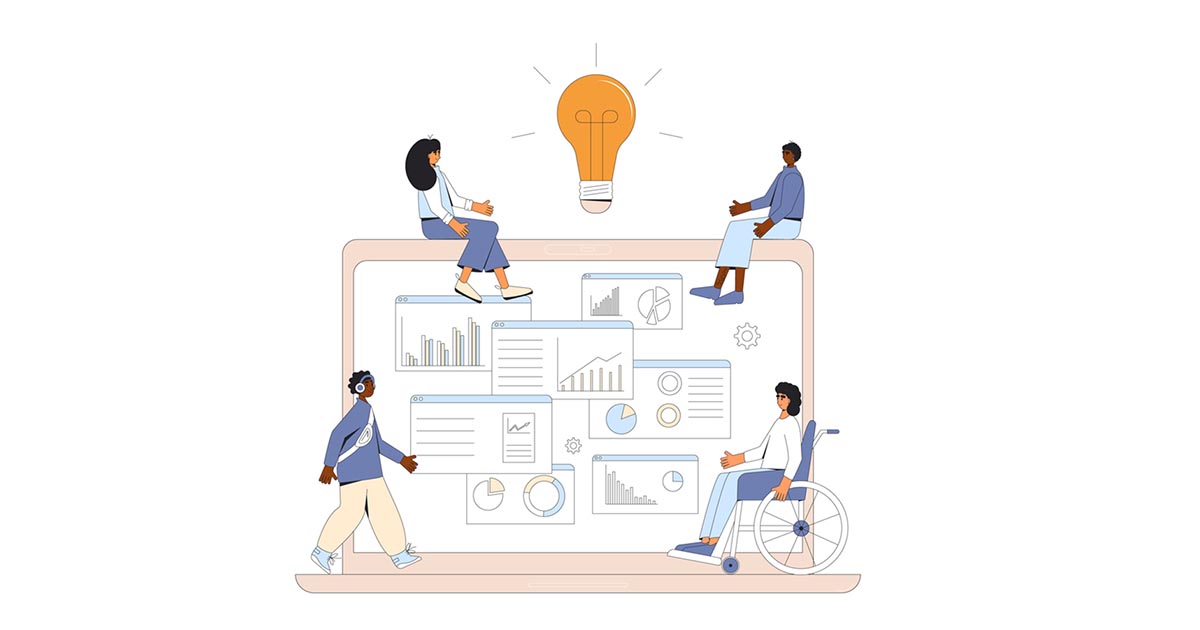About 14 million Americans receive Social Security disability benefits and another 10 million have either applied for or received disability benefits at some time in their lives. Eligibility for both the Social Security Disability Insurance (SSDI) and Supplemental Security Income (SSI) programs is based on an inability to work at a substantial level due to long-lasting, disabling health conditions. Yet, many SSDI and SSI beneficiaries want to work—whether at levels that allow them to maintain benefits or exit the programs entirely. Some might require help to work successfully. For them, identifying and addressing inequities in access to work supports and services isn’t an academic exercise. It can mean the difference between a lifetime of poverty and dependence on public programs and living a productive and independent life.
To understand how best to support beneficiaries who want to work, policymakers must have high-quality data. This imperative is embodied in the Foundation for Evidence-Based Policymaking Act of 2018, known as the Evidence Act, which requires federal agencies to develop and implement evidence-building learning agendas and make federal data publicly available. It is also reflected in recent executive orders designed to advance racial equity and support for underserved communities, which require agencies to develop equity action plans and report on their progress.
High-quality data already inform our understanding of beneficiaries’ work experiences. The Social Security Administration’s (SSA’s) data collection efforts provide a solid foundation for understanding the experiences of its disability program participants and informing its Learning Agenda and Equity Action Plan. Since the original evaluation of the agency’s Ticket to Work program two decades ago, Mathematica has worked with SSA to collect detailed data to understand the characteristics, health, and work-related experiences of SSI and SSDI beneficiaries. We continue to work with SSA to produce the following:
- The Disability Analysis File (DAF), which contains longitudinal administrative data on the more than 35 million working-age adults and children who participated in the SSI and SSDI programs from 1996 to 2021. The file aggregates SSA administrative data from numerous sources that have been processed and formatted for research purposes. The files contain information on SSI and SSDI eligibility, benefits, and disabling impairments, as well as earnings, use of work supports, and other employment-related measures.
- The National Beneficiary Survey (NBS), which has been fielded eight times between 2004 and 2023, augments the data available to SSA in its administrative records. It collects information from SSI and SSDI beneficiaries about their personal characteristics, health, health insurance, interest in work, barriers to work, use of services, employment, income, and experiences with the Social Security programs. It uses nationally representative samples of beneficiaries ages 18 to 66 ranging in size from 3,000 to 9,000.
These longstanding data sources have become staples for SSA and researchers to study the experiences of people who participate in the disability programs. The DAF and NBS represented the first large-scale efforts to document work-related beneficiary characteristics and experiences. Together, they have greatly expanded the collective understanding of beneficiary employment. We now know the following:
- About 45 percent of beneficiaries have work goals and see themselves working in the near future. This percentage has increased over time. At any given time, about 15 percent are preparing for, seeking, or engaged in employment.
- Nearly one-quarter of beneficiaries work during their first five years on the rolls, a much larger share than point-in-time data suggest.
- About 5 percent of SSDI beneficiaries and about 9 percent of SSI beneficiaries have their cash benefits discontinued because of earnings in at least one month during the first five years after receiving benefits. However, many eventually return to the disability programs for support.
- Beneficiary knowledge of key SSI and SSDI provisions designed to support work is generally poor, even among those who were recently employed.
Because of SSA’s investments in the DAF and NBS, policymakers now recognize that work is not a rare occurrence, but rather a fulfilling activity for many beneficiaries, and an important goal for others. Disability programs are no longer viewed as a last resort for those who exit or are unable to enter the labor force because of poor health. They are a key source of support that can influence beneficiaries’ decisions to work and make a higher standard of living possible for some. In the past, beneficiaries who wanted to take advantage of the programs’ work incentive provisions were sometimes viewed as trying to “game” the system. High-quality data helped policymakers learn that proper understanding of the SSA work incentive provisions is critical to supporting working beneficiaries. In response, SSA has expanded and refined its outreach and education efforts to offer vital information to program participants who want to work.
Additional data can further our understanding of the needs of disability program applicants and beneficiaries. In recognition of the capacity of DAF and NBS data to support research and decision making, SSA has continued to collect and improve the contents of the files. SSA enhanced the information available for child SSI beneficiaries in the DAF, many of whom exit the SSI program at age 18 as they consider work. The NBS now includes large samples of “successful workers” and questions that better capture information about supported employment and work in competitive, integrated settings—aspects of the employment of people with disabilities for which no nationally representative data exist. Both the DAF and NBS now have public use formats that enable external researchers to use the data to study beneficiary experiences, bolstering the role these data can play in advancing knowledge and shaping policy.
As SSA identifies and addresses inequities in service delivery, DAF and NBS data can provide an evidence base. DAF data indicating where beneficiaries live can be linked with local-level information to answer questions about structural barriers that contribute to lower-than-average work activity among beneficiaries in certain areas. SSA could use this information to direct mailings about employment or other supports or to tailor outreach to encourage benefit applications from underrepresented populations. Findings from the NBS could also inform SSA outreach, including developing culturally sensitive materials for potentially underserved populations, such as those with low educational attainment or limited English proficiency. The large NBS samples and ability to pool data over several years enable researchers to look at subgroups that are often too small in other national surveys.
New data is needed to advance equity and better understand disparities in service access and employment outcomes. SSA is continuing to expand its data collection to understand the pathways of individuals as they move from seeking to receiving program benefits. The agency intends to incorporate rich information collected from applicants into the DAF, which will provide a deeper understanding of how disability beneficiaries came to the programs. It also plans to implement new data collection efforts that will complement the NBS and DAF and broaden the range of equity issues the agency can explore. In coming years, SSA will survey applicants and people who leave federal disability programs. With better information on individuals as they move from applicant to beneficiary to former beneficiary, SSA will have more insight into the lives of those who depend on its programs. It can use this information to make changes designed to meet diverse needs, support work efforts, and promote greater economic security.
SSA’s efforts to collect information about beneficiaries and support their aspirations for employment demonstrates how data can improve our understanding of lived experiences and promote effective policies. If not for the NBS and DAF, many of the experiences of SSI and SSDI beneficiaries would remain invisible to policymakers. Of course, even with the benefit of rich data like the DAF and NBS, it is critical that policymakers supplement quantitative analyses with in-depth information about the qualitative experiences of beneficiaries. From the beneficiary’s perspective, there is still much that SSA and other agencies could do to improve their programs. In addition to research that centers the voices of beneficiaries, it will be important for SSA and other agencies to incorporate lived experiences into the design of new data collection and evaluation activities. The evolution of SSA’s data collection efforts to better understand inequities in its service delivery and programs continues, but the process can serve as a model for other agencies creating and executing their own learning agendas and equity action plans.




